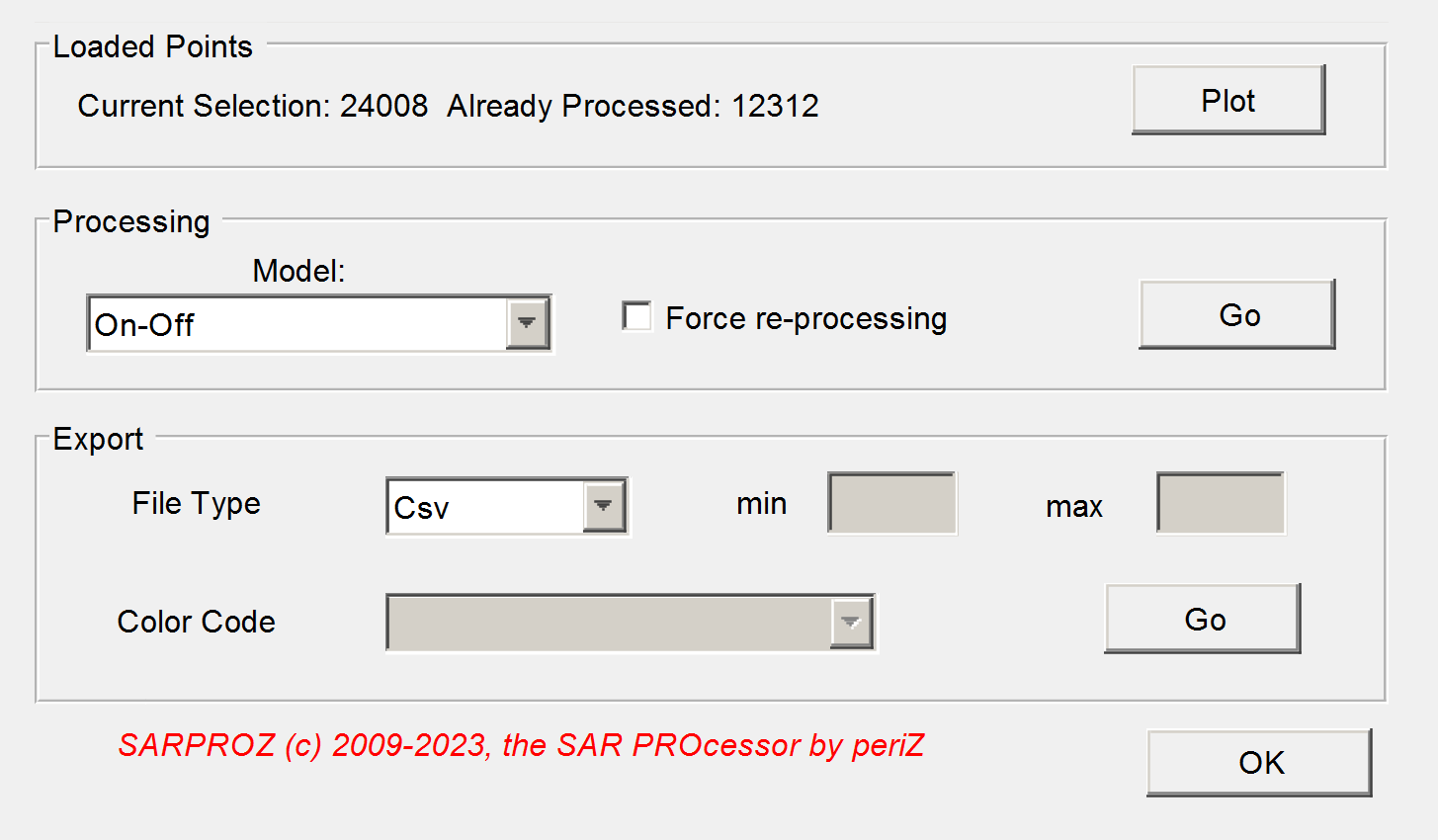
Help for Amplitude Time Series Analysis
This function implements the Amplitude Time Series Analysis [1].
The analysis is carried out on points selected through the function Load Mask.
The amplitudes are analyzed as a function of Time, Normal Baseline, Doppler Centroid, Temperature,
Central Frequency (in the case of 2-sensors analysis, as ERS and Envisat, [2])
Outputs are RCS, pointings in Range and Azimuth, target extensions in Range and Azimuth,
birth and death dates, dependency on temperature.
See reference [1] for more details.
This processing is not strictly needed for classical PS and QPS analysis.
The results are useful for classifying and recognizing Urban SAR Permanent Scatterers.
Moreover, they can be used for identifying and analyzing temporary PSs [3].
See the Small Area Processing for a detailed analysis on a sub-region (Amplitude Analysis).
Sparse files saved in RESULTS
RCS.mat
PuntamRg.mat
LargRg.mat
PuntamAz.mat
LargAz.mat
Tin.mat
Tfin.mat
KTempAmp.mat
ModFit.mat
References:
[1] D. Perissin, A. Ferretti, "Urban target recognition by means of repeated spaceborne SAR images",
IEEE Transactions on Geoscience and Remote Sensing, Volume 45, Issue 12, December 2007, Pages: 4043 - 4058.
[2] D. Perissin, C. Prati, M. Engdahl, Y.-L. Desnos, "Validating the SAR wave-number shift principle
with ERS-Envisat PS coherent combination", IEEE Transactions on Geoscience and Remote Sensing,
Volume 44, Issue 9, Sept. 2006 Pages: 2343 - 2351.
[3] C. Colesanti, A. Ferretti, D. Perissin, C. Prati, F. Rocca "Evaluating the effect of the observation time
on the distribution of SAR Permanent Scatterers", Proceedings of FRINGE 2003, Frascati (Italy),
1-5 December 2003, ESA SP-550, January 2004.